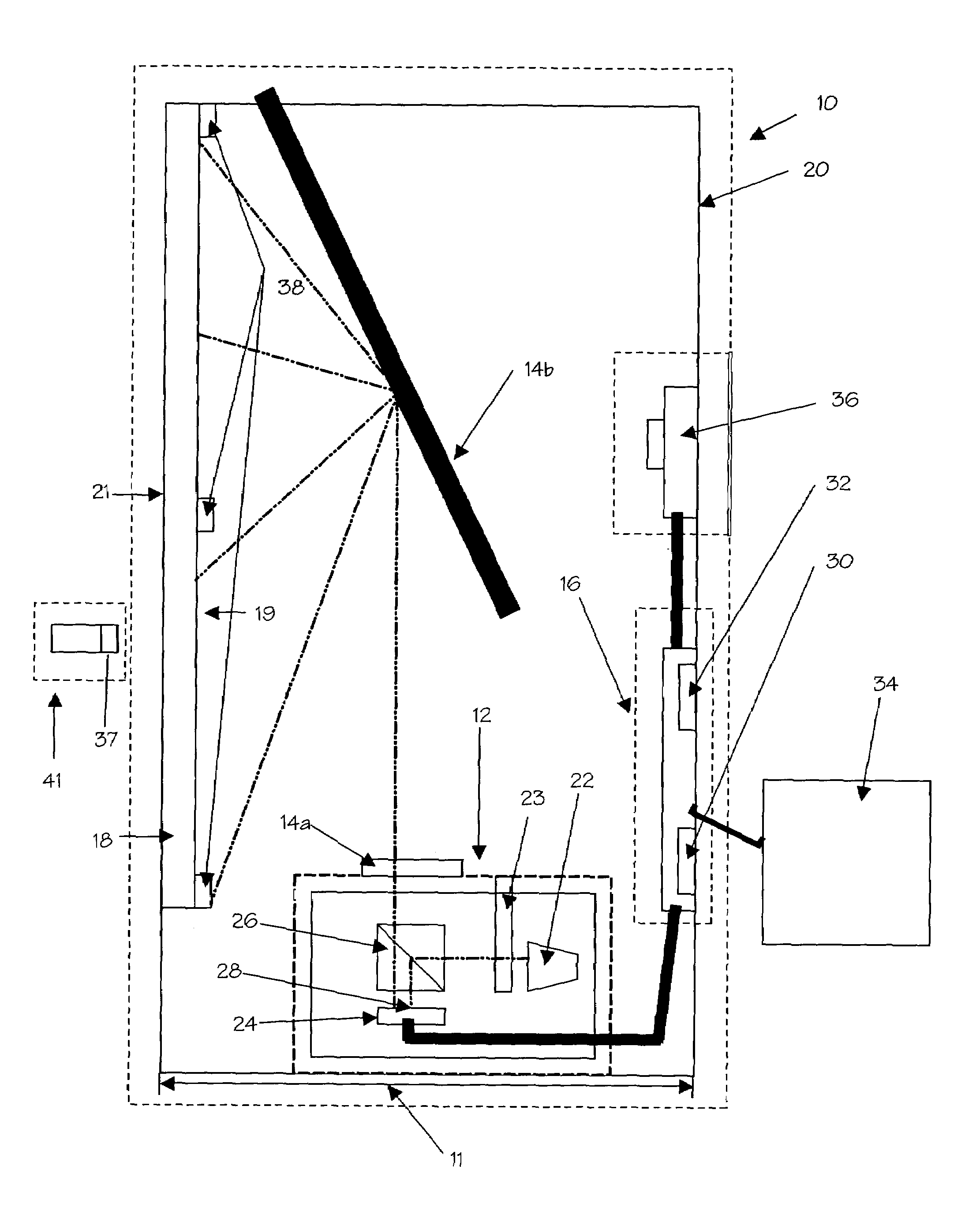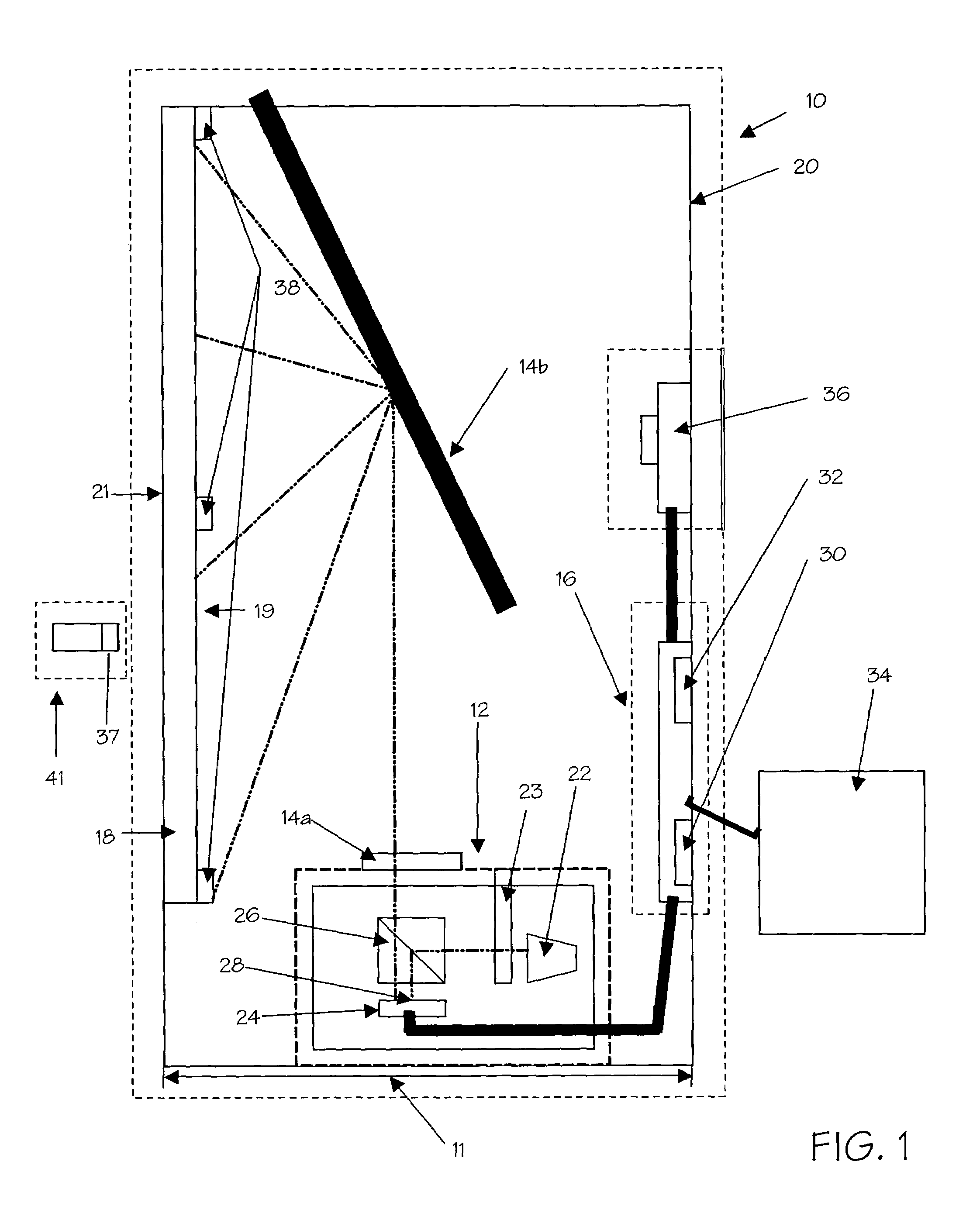Rear projection imaging system with image warping distortion correction system and associated method
a rear projection imaging and distortion correction technology, applied in the field of micro-display-based rear projection imaging systems, can solve the problems of complex optical distortion, the depth of the cabinet or enclosure, and achieve the effects of reducing the depth of the cabinet or enclosure, and reducing the depth of the micro-display-based rear projection imaging system
- Summary
- Abstract
- Description
- Claims
- Application Information
AI Technical Summary
Benefits of technology
Problems solved by technology
Method used
Image
Examples
Embodiment Construction
[0018]FIG. 1 displays, in schematic form, a rear projection monitor 10. The rear projection monitor 10 comprises a projector 12, projection optics 14a and 14b, control electronics 16, a viewing screen 18, and a cabinet 20. Rear projection monitor 10 is of a thin type, meaning that the depth of cabinet 20, represented by distance 11 on FIG. 1, is less than seven inches. Rear projection monitor 10 may be used, for example, as a television, a home cinema, or the like. Projector 12 is mounted below the center horizontal axis of viewing screen 18 and projects upwards, off-axis. The illustrated projector is a single microdisplay projector for use in a rear projection imaging system and includes lamp 22, spinning color wheel 23, liquid crystal on silicon (LCOS) microdisplay 24, and polarizing beam splitter 26. A multiple microdisplay projector or a field sequential color microdisplay projector that may not require the use of a spinning color wheel, as well as projectors utilizing other mic...
PUM
 Login to View More
Login to View More Abstract
Description
Claims
Application Information
 Login to View More
Login to View More - R&D
- Intellectual Property
- Life Sciences
- Materials
- Tech Scout
- Unparalleled Data Quality
- Higher Quality Content
- 60% Fewer Hallucinations
Browse by: Latest US Patents, China's latest patents, Technical Efficacy Thesaurus, Application Domain, Technology Topic, Popular Technical Reports.
© 2025 PatSnap. All rights reserved.Legal|Privacy policy|Modern Slavery Act Transparency Statement|Sitemap|About US| Contact US: help@patsnap.com



